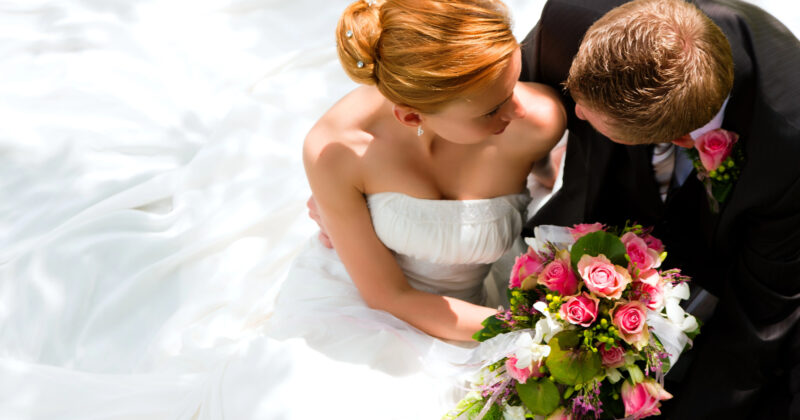Wedding planning is more than just scheduling dates and organizing vendors—it’s about orchestrating one of life’s most memorable moments with style, grace, and precision. To do this, many successful wedding planners rely on visually stunning, user-friendly websites to showcase their services and stand out in a highly competitive market. From elegant color palettes to intuitive navigation, these websites give couples a clear idea of what to expect on their special day.
Whether you’re newly venturing into wedding planning or are a seasoned pro, having a robust online presence is essential. Well-crafted websites help you build credibility, highlight your unique brand, and offer prospective clients a glimpse into your design aesthetics, services, and past success stories. For anyone looking to create or revamp their wedding planner website, check out some of the best wedding planner websites at CyberOptik Website Services to get started on the right foot.
A well-executed site can also serve as a central hub for all your wedding details, from color schemes and seating charts to vendor contact forms. By leveraging modern web design best practices, you can create an immersive experience that inspires couples and differentiates your business from the best wedding planner websites.
Examples of the Best Wedding Planner Website Designs
- Mindy Weiss: Mindy Weiss’s website immediately showcases her flair for sophisticated and whimsical celebrations. The homepage sets the tone with a crisp design and vibrant photography that highlights her most memorable weddings. Soft pastel colors evoke romance and elegance, aligning well with her target audience. The intuitive navigation bar keeps visitors engaged, allowing them to browse through services, real wedding stories, and a detailed “About” page that highlights Mindy’s decades of industry experience. The site’s use of wide, clean visuals and testimonial spotlights offers visitors a deeper understanding of her approach and results.
- Colin Cowie: Its website delivers an impressive blend of high-end design and functionality, reflecting his reputation for lavish and personalized events. A bold hero image greets you upon arrival, setting the stage for a luxurious experience. The site’s consistent typography and color scheme unify its many sections, including services, press features, and a portfolio of extravagant events. Informative and concise copy lets potential clients quickly gauge Cowie’s expertise, while stunning galleries show off spectacular transformations he has orchestrated. Each element of the design speaks to an upscale, detail-oriented brand.
- Laurie Arons: Its site presents a warm, sophisticated digital space that conveys her refined style. High-resolution images, muted tones, and a clean layout immediately immerse users in the ambiance of luxury weddings. The navigation bar clearly labels service offerings, real weddings, and testimonials, ensuring visitors can seamlessly explore her portfolio. From cozy vineyards to grand ballrooms, Laurie’s range is highlighted through immersive photo galleries accompanied by concise descriptions. Visitors can also find personal touches like a heartfelt biography and even practical tools for couples beginning the planning journey, reinforcing trust and professionalism.
- David Stark Design: David Stark’s website fuses creativity with a user-friendly interface. At first glance, bold images and minimalistic text blocks guide visitors through his carefully curated portfolio. A consistent color palette helps anchor the design, so the vibrancy of his featured events shines without overwhelming the viewer. Engaging case studies showcase the behind-the-scenes process and the team’s philosophy, highlighting David’s passion for innovative, artistic wedding experiences. A dedicated “Press & Praise” section emphasizes social proof, while the website’s mobile-friendly design ensures couples can research on any device without loss of functionality.
- Tara Guérard Soirée: Tara Guérard’s site embraces airy whites and fresh accents, conveying a sense of timeless elegance. The landing page welcomes visitors with captivating photos from recent weddings, showcasing her ability to transform classic southern settings into modern, sophisticated affairs. Clear calls to action direct users to browse specific services, view event galleries, or learn more about her ethos in planning. The site places emphasis on personal connection, featuring a heartfelt “Meet Tara” page that resonates with brides and grooms seeking a planner who values strong client relationships. Everything here is polished, from typography to photo arrangement.
- Shannon Leahy Events: Shannon Leahy’s website exhibits a delicate color palette combined with elegant text overlays, making it visually enchanting. The design approach underscores the sophistication and personalization that Shannon brings to her events. Visitors can explore rich photography showcasing varied wedding styles—from intimate garden ceremonies to opulent indoor soirées. A simple, direct contact form is accessible, guiding potential clients toward a smooth inquiry process. The blog section stands out as well, offering real wedding highlights and planning tips that further position Shannon Leahy as an industry authority for those seeking the best wedding planner website elements.
- Lisa Vorce: Lisa Vorce’s homepage emphasizes large, vibrant imagery, capturing elegant outdoor weddings and luxurious receptions. A restrained use of color accentuates the natural beauty within the photos and ensures that potential clients stay focused on her showcased events. Visitors can effortlessly navigate between a portfolio of global destination weddings, an informative bio, and an “In the Press” section that underscores her credibility. The site is also quick to load, hinting at a refined approach to design. By balancing captivating visuals with thoughtful storytelling, Lisa Vorce’s brand identity shines as both modern and timeless.
- Bliss Events: Bliss Events welcomes users with a gentle color theme and a warm introduction to their philosophy of creating personalized, joyful weddings. A concise, well-structured menu at the top highlights their offerings—full-service planning, partial planning, and day-of coordination. High-quality photos in a rotating gallery allow couples to visualize how Bliss Events tailors each celebration to the couple’s unique preferences. Their blog features helpful wedding planning tips and glimpses into behind-the-scenes operations, which can be particularly useful for first-time brides or grooms. The website’s gentle typography adds a sense of comfort, inviting visitors to explore further.
- Rafanelli Events: Rafanelli Events’ website projects an upscale, fashion-forward aesthetic, immediately drawing users in with chic photography and minimalistic design elements. The homepage displays a curated feed of high-profile events, including celebrity weddings. Each gallery image, when clicked, expands into a full-screen visual narrative of the celebration, giving potential clients a taste of Rafanelli’s eye for detail. While the design is lavish, it remains intuitive to navigate, ensuring anyone can easily find information about services, team members, and contact details. Subtle animations add an extra layer of polish to an already refined digital environment.
- Easton Events: Easton Events employs a modern, editorial design approach that feels akin to flipping through a luxury wedding magazine. Soft neutrals frame each page, allowing the exquisite imagery to speak for itself. A clearly segmented menu reveals their broad scope—from multi-day destination weddings to smaller, more intimate gatherings. Each project page details the concept behind the event, giving an inside look at Easton’s creative process. The site’s consistent style fosters trust in their vision, and the straightforward inquiry form ensures couples feel welcomed and encouraged to take the next step.
- Marcy Blum: Marcy Blum’s website takes a sleek, story-driven approach, guiding potential clients through vivid galleries and insightful planning tips. Large hero images highlight dramatic floral arrangements, bespoke tablescapes, and more. A clean, uncluttered layout champions user experience, while embedded quotes from previous clients establish credibility. The site offers an in-depth “About” section that narrates Marcy’s background and planning philosophy, forging a personal connection with visitors. The synergy between well-chosen typography and compelling visuals helps define an environment of grandeur and exclusivity—key elements that couples often seek in the best wedding websites.
- Preston Bailey: Preston Bailey’s site exudes flair and creativity, mirroring his iconic signature designs. The homepage displays bold color palettes and floral extravaganzas that captivate at first glance. The user interface allows visitors to easily explore services, blog posts, and upcoming events. Perhaps most impressive is the portfolio section, where immersive slideshows reveal the transformation of ordinary venues into dreamlike wedding landscapes. Preston’s commitment to artistry is evident in both his designs and the site’s layout. By blending glamorous visuals with straightforward navigation, couples can quickly see why Preston is a leader in luxury weddings.
- Sasha Souza Events: Its website emphasizes a modern twist on classic romance, utilizing vibrant visuals and dynamic layouts. Visitors land on a full-width hero image showcasing Sasha’s flair for integrating fresh, playful elements into otherwise traditional settings. The site’s “Services” page breaks down various planning packages, each paired with real-world success stories and inspiring imagery. Sasha’s blog deepens the brand’s personal connection with clients, offering a behind-the-scenes look at her process and a treasure trove of wedding tips. The design’s bright yet cohesive colors set the stage for a friendly, approachable vibe.
- Alison Events: Alison Events strikes a balance between refined elegance and a welcoming atmosphere. Soft pastel backdrops highlight bold floral imagery and graceful event décor across the homepage. Clear navigation links point visitors to detailed service descriptions, travel tips for destination weddings, and an inspiring portfolio of events in various locales. The website’s minimal typography keeps attention on the photographs, while short but effective captions provide context for each image. This blend of streamlined design and warm storytelling positions Alison Events as a go-to choice for couples seeking a personal touch and exceptional service.
- Michelle Rago Destinations: Michelle Rago’s domain extends beyond local weddings, with a focus on glamorous destination events worldwide. The site’s homepage is an elegant showcase of exotic locales and luxurious reception setups, enticing adventurous couples. Clean lines and balanced negative space surround the vivid photography, ensuring the images remain the focal point. A well-crafted blog features planning insights, travel tips, and behind-the-scenes coverage of far-flung celebrations. Visitors gain a sense of the brand’s global expertise and personal touch, essential for couples wanting a seamless destination wedding experience that still feels uniquely their own.
- Matthew Robbins Design: Matthew Robbins’s digital presence demonstrates an artistic sensibility that blends modern minimalism with luxurious flourishes. Large, cinematic images greet visitors, inviting them to explore a curated collection of past events. Each event page provides a glimpse into the transformation process, from conceptual mood boards to breathtaking final looks. The site’s aesthetic fosters an intimate, gallery-like atmosphere, supported by thoughtful copy. This combination makes it effortless for prospective clients to understand Matthew’s passion for high-end, detail-oriented weddings, delivering precisely what they’d expect from one of the best wedding planner website designs in the industry.
- Calder Clark: Calder Clark’s site focuses on Southern hospitality and charm, with a design style that radiates warmth. The palette leans into earthy tones and gentle pastels, reflecting the brand’s approach to organic elegance. Each web page offers an array of immersive images showcasing refined décor, thoughtful tabletop designs, and heartfelt wedding moments. The site’s streamlined navigation and readable text sizes contribute to an overall inviting feel. Calder’s personal touches—like client stories and short behind-the-scenes anecdotes—encourage trust and underscore her dedication to delivering unforgettable events rooted in authenticity and attention to detail.
- Events by Talissa: Events by Talissa merges a bold sense of style with intuitive site architecture. From the top, the homepage dazzles visitors with dynamic slides of her most memorable celebrations, each reflecting a distinct theme. The menu, pinned at the top, ensures easy access to essential sections like services, gallery, and contact form. Talissa’s blog offers in-depth planning advice and real wedding features, helping couples envision their own day. A consistent color scheme of soft neutrals paired with accent hues ties everything together, reinforcing the polished, modern image that resonates with couples seeking a fresh approach.
- Karla Casillas and Co.: Karla Casillas’s website highlights dreamy destination weddings in coastal and tropical settings. Elegant scripting fonts and subtle wave-like patterns give a nod to oceanic vibes, appealing to couples yearning for a relaxed yet refined celebration. Gorgeous destination photography dominates each page, while concise, friendly text offers clarity on services and specialties, such as bilingual coordination and bespoke venue sourcing. The site’s emphasis on personal connections with clients stands out, with testimonial snippets peppered throughout. Effortless navigation, plus well-placed calls to action, ensures visitors can quickly connect with Karla for a consultation.
- Blue Ivy Company: Blue Ivy Company’s site balances bold design elements with crisp typography, echoing the company’s dedication to seamless, artful event planning. A stylish hero video showcases recent weddings, capturing laughter, dancing, and behind-the-scenes magic in a dynamic way. As you scroll, robust testimonials from past clients demonstrate the firm’s reliability and creativity. Service pages detail their signature planning packages, each accompanied by photos that illustrate real-life results. A thoughtful FAQ embedded within the site helps set expectations for prospective clients, while the well-branded aesthetic leaves no doubt about Blue Ivy’s commitment to quality.
To sum up, wedding planners today must have dynamic, appealing websites that effectively showcase their expertise and creative range. Each of the sites highlighted above exemplifies what couples value most: clear visuals, easy navigation, and a thoughtful, personalized touch. Investing in high-quality photography and honest storytelling helps forge an immediate connection with potential clients who are looking for trusted partners to bring their special day to life.
From luxury ballrooms to tropical beaches, these planners prove there’s no single blueprint for a successful wedding website. Instead, the design should reflect the planner’s unique brand identity, client base, and creative vision. Whether opting for soft pastels or bold modern layouts, it’s the seamless fusion of branding and user experience that drives results.
If you’re seeking to elevate your online presence and stand among the best wedding websites, working with a professional web design agency can provide the specialized guidance you need. A well-planned site can attract ideal clients and showcase your expertise at every turn.
Top 10 Most Important Aspects of a Wedding Planner Website
- High-Quality Imagery: Beautiful photos of past events illustrate your style, help couples visualize their dream wedding, and instantly add credibility.
- Clear Services Overview: Detailing the scope of your planning options—full-service, partial, or day-of—prepares prospective clients and manages their expectations.
- Intuitive Navigation: Keep menus simple and logical so visitors can easily find event galleries, services, and contact information without frustration.
- Personal Branding: Sharing your story, values, and passion helps couples feel a connection. A personal approach differentiates your brand in a crowded market.
- Testimonials & Reviews: Positive feedback from former clients demonstrates reliability and helps build trust with newly engaged couples.
- Mobile-Friendly Design: Ensure your site loads quickly and displays flawlessly on all devices so couples can browse anytime, anywhere.
- Contact & Inquiry Forms: Make it simple for couples to reach out with a well-structured form, ensuring prompt and efficient lead generation.
- Showcase Unique Style: Whether your style is classic, modern, bohemian, or luxury, convey this visually and through compelling copy to attract your ideal clients.
- Blog or Insights Section: Posting wedding tips, event recaps, and behind-the-scenes content establishes you as an expert and enhances SEO.
- Fast Page Load Times: Compress images and streamline your code to provide a seamless experience. Slow pages can deter visitors before they see your work.
FAQs About Wedding Planner Web Design
How can I make my wedding planner website stand out from competitors?
Focusing on a unique brand identity, using standout imagery, and sharing authentic stories of your events helps you connect with your audience on a personal level.
What platform is best for building a wedding planner website?
WordPress is generally considered the best platform for a wedding planner website because it combines flexibility, user-friendliness, and robust customization options.
How much does it typically cost to design a wedding planner website?
Basic websites can begin around $2,000 and increase from there based on features, such as custom designs, interactive galleries, or e-commerce components.
How often should I update my wedding planner website?
Regularly updating your site with fresh content is important, but it should always add value for visitors rather than simply appeasing search engines.
How do I choose the right designer for my wedding planner website?
Seek an agency or professional with a strong portfolio in event-related designs, clear communication, and an understanding of your creative vision.
Ready to elevate your wedding planner’s website? Contact CyberOptik for a free proposal for your new wedding planner website design and set your business up for success.




